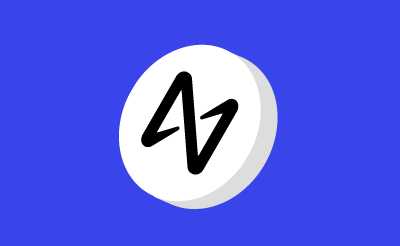Ren
Ren Protocol moves cryptocurrency assets to different blockchain networks through leveraging the RenVM and DarkNodes.
What is Ren?
- Ren Protocol, formerly known as Republic Protocol, is designed to allow interoperability to its users. This way, they can transfer cryptocurrencies across different blockchains.
- This means that a user can lock Bitcoin, for example, within the Ren software and mint the ERC-20 equivalent of that token, which would be RenBTC in a 1:1 ratio to Ethereum.
- These newly created ERC-20 tokens now have the ability to be used within decentralized finance (DeFi) for a multitude of functions, such as trading, portfolio management, lending, borrowing, and others.
- The key thing to keep in mind here is that the original assets remain locked in Ren and can be unlocked by paying a fee.
- To do this, Ren leverages the Ren Virtual Machine, otherwise referred to as RenVM that is powered through a decentralized network of machines known as “DarkNodes.”
- DarkNodes contribute their computing power and storage space to the RenVM in exchange for fees, and this moves the cryptocurrencies across the blockchains.
Key Metrics
| Ticker | REN |
| Token Name | Ren |
| Token Type/Protocol | ERC-20 |
| Total Token Supply | 999,999,633 |
| Current Circulating Supply | See Coinmarketcap |
| Market Capitalisation | See Coinmarketcap |
| Token Creation Date | 2018 |
| Can it be mined? | No |
Who is behind Ren?
Ren was originally founded and created by Taiyang Zhang in 2017. It was initially called Republic Protocol and was introduced in January of 2018 for the very first time. The rebranding to Ren occurred in 2019. Before creating Ren, Zhang co-founded Neucode, which was a software and web development startup. In 2019, Zhang co-founded the mining pool KeeperDAO.
What is the purpose of Ren?
The purpose of Ren is to allow anyone to transfer cryptocurrency assets across a multitude of different blockchain networks. Ren allows for decentralization as well as the trustless exchange of cryptocurrency assets across blockchain using its central platform, the aforementioned RenVM. This is done through the usage of a network of DarkNodes, which provide the required computing power to identify and then process cross-chain cryptocurrency orders. REN is required to pay for an operation on the Ren network, and DarkNode operators need to stake 100,000 REN in order to operate a node.
Insights
- Ren allows for the decentralized as well as the trustless exchange of cryptocurrency assets across blockchain using its RenVM.
- This is done through the usage of a network of DarkNodes, which provide the required computing power to identify and then process cross-chain cryptocurrency orders.
- The algorithm implemented here to conduct this efficiently is known as the Shamir Secret Sharing Scheme, which fragments the orders so that the DarkNodes do not know the amount or destination of the transacted crypto.
- RenVM uses zkSnarks, which is a cryptographic technique, to shield transactions, while the Shamir Secret Sharing Scheme fragments order and hides information from the nodes.
- RenVM also began its transaction towards a decentralized set of nodes that power the consensus and execution.
- RenVM is built on Ethereum, and as such, the cross-chain transactions are executed on the Ethereum blockchain using the ERC-20 token equivalents of the assets transacted.
- To swap assets across different blockchain networks, RenVM essentially gets the tokens on one chain and then creates new tokens on another chain that represent the original ones. (BTC = RenBTC)
Risks
- When using Ren, there are numerous risks associated with the way the platform works, including the short history risk, volatility risk, liquidity risk, demand risk, forking risk, and cyber security risk.
- The core team has majority control over most DarkNodes.
- The Ren community is not under any legal obligation to disclose any material information to the public regarding the activities that occur.
News and Updates
- RenVM integrated a direct bridge for Solana.
- The Ren team and community voted on and agreed to update the wrapping fees temporarily during the transitional phase.
- Ren and Curve Finance launched a new pool on Avalanche, renBTC/wBTC. This meant that users could now swap between renBTC and wBTC at low gas costs.
- RenVM Greycore is on Testnet. Progress towards decentralization is well on its way.
Disclaimer:
All investments are speculative and involve substantial risk and uncertainty. Investors should understand the nature of digital assets, including the terms of return and the risk of assets. We encourage investors to fully understand the assets and the risk associated with them prior to making any investment.



